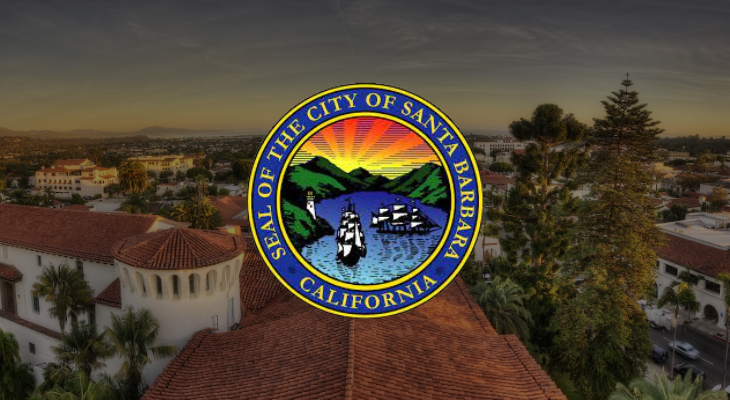The City’s Annual Water Supply Management Report is available for public review. This document summarizes the City’s water production and water use over the past water year (October 2022 – September 2023), water supply outlook, and conservation efforts. The draft report is scheduled for review and approval at City Council on January 23.
[Comments are requested by January 5, 2024. The full document can be seen here, with an excerpt provided below]
The City of Santa Barbara operates the water utility to provide water for its citizens, certain out-of-City areas, and visitors. Santa Barbara has an arid climate, so providing an adequate water supply requires careful management of water resources. The City has a diverse water supply portfolio, including local reservoirs (Lake Cachuma and Gibraltar Reservoir), groundwater, State Water Project water, desalination, and recycled water. The City also considers water conservation an important tool for balancing water supply and demand. The City’s Enhanced Urban Water Management Plan (EUWMP) was adopted by City Council on June 29, 2021. The EUWMP details the City’s water supply and management strategy for the next 30 years.
This annual report summarizes the following information:
- The status of water supplies at the end of the water year (WY) (September 30, 2023)
- Water supply outlook
- Water conservation and demand
- Major capital projects that affect the City’s ability to provide safe clean water
- Significant issues that affect the security and reliability of the City’s water supplies
Appendix A provides supplemental detail. Additional information about the City’s water supply can be found on-line at: www.SantaBarbaraCA.gov/Water.
WATER SUPPLIES
The City has one of the most diverse water supply portfolios in the state, including local surface water; local groundwater (which includes water that seeps into Mission Tunnel); State Water Project water; desalinated seawater; and recycled water. Typically, most of the City’s demand is met by local surface water reservoirs, desalination, and recycled water, and is augmented as necessary by local groundwater and State Water Project water.
The City’s local surface water comes from Gibraltar Reservoir and Lake Cachuma, both located in the upper Santa Ynez River watershed. The inflow to these reservoirs is rainwater, so rainfall data for Gibraltar Reservoir has important water supply management implications. Figure 1 shows rainfall for the past ten years as compared to the 50-year average. Figure 2 provides additional historic rainfall information by showing 50 years of rainfall data, 50-year average rainfall, and 10-year average rainfall. Rainfall in the Santa Ynez River watershed during WY 2023, as measured at Gibraltar, was 232% of the 50- year rainfall average, with most of the rain falling during large storms in January, February, and March.
Runoff generated by average rainfall is generally enough to fill Gibraltar; however, it typically takes above-average rainfall to produce any significant inflow to Cachuma.
At the end of WY 2023, Lake Cachuma and Gibraltar were at approximately 93% and 54%, respectively, of their total capacities.
To enhance rainfall, the City has historically participated in the cloud-seeding program administered by the County of Santa Barbara. Minimal seeding was needed in fiscal year 2023 due to winter rains. The City does not plan to participate in cloud seeding during fiscal year 2024 because enhanced rainfall could result in Cachuma spilling again and the loss of Member Units’ stored carryover water.
Read the full report here: https://santabarbaraca.gov/sites/default/files/2023-12/Draft%20WY2023%20Annual%20Water%20Supply%20Report_Notice.pdf








